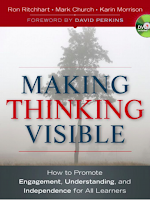Our current unit of inquiry in Grade 4 is a 'How we Express Ourselves' unit. The central idea is 'People around the world express their values and beliefs in many ways.'
For our summative assessment task we created an
assignment sheet, a student created
vocabulary list and a teacher/student created
assessment rubric.
We planned a field trip for this unit of inquiry to visit different places of worship in Bengaluru. After a collaborative planning meeting we thought it would be most effective as the stimulus for the students summative assessment task. We designed the assessment rubric with students before the field trip so that they were clear about the purpose of the field trip- to find evidence of how people express their values and beliefs.
Our field trip involved a visit to a Gurdwara, a Mosque and a Church. We also have a trip scheduled to a Hindu temple next week. Though we went on this trip with a view to creating a summative assessment task the benefits of the field trip far exceeded this aim.
Our student group represent five different religions as well as those identifying as non-religious. They were enthusiastically welcomed into each place of worship and received an interesting presentation as well as a question and answer session. Frequently throughout the day we saw many PYP attitudes being demonstrated by our students including appreciation, curiosity, enthusiasm, respect and tolerance.
 |
| Appreciation: appreciating the wonder and beauty of the world and its people. |
 |
| Curiosity: being curious about the world, its people and cultures. |
 |
| Enthusiasm: enjoying learning and willingly putting the effort into the process. |
 |
| Respect: respecting others and the world around them. |
 |
| Tolerance: being sensitive about differences and diversity in the world. |
Student questions were encouraged and were treated with kindness and respect. Many students made comparisons between their own religion and other religions. We discussed scriptures, worship, symbols, traditions, history, language and many other aspects of religion.
Recently, news coverage on different religions in the world does not focus on the connections, peace and harmony that these religions teach. This was a welcomed and refreshing way for students to experience different religions and perspectives, and all the more meaningful that we were able to experience it on International Peace Day.






